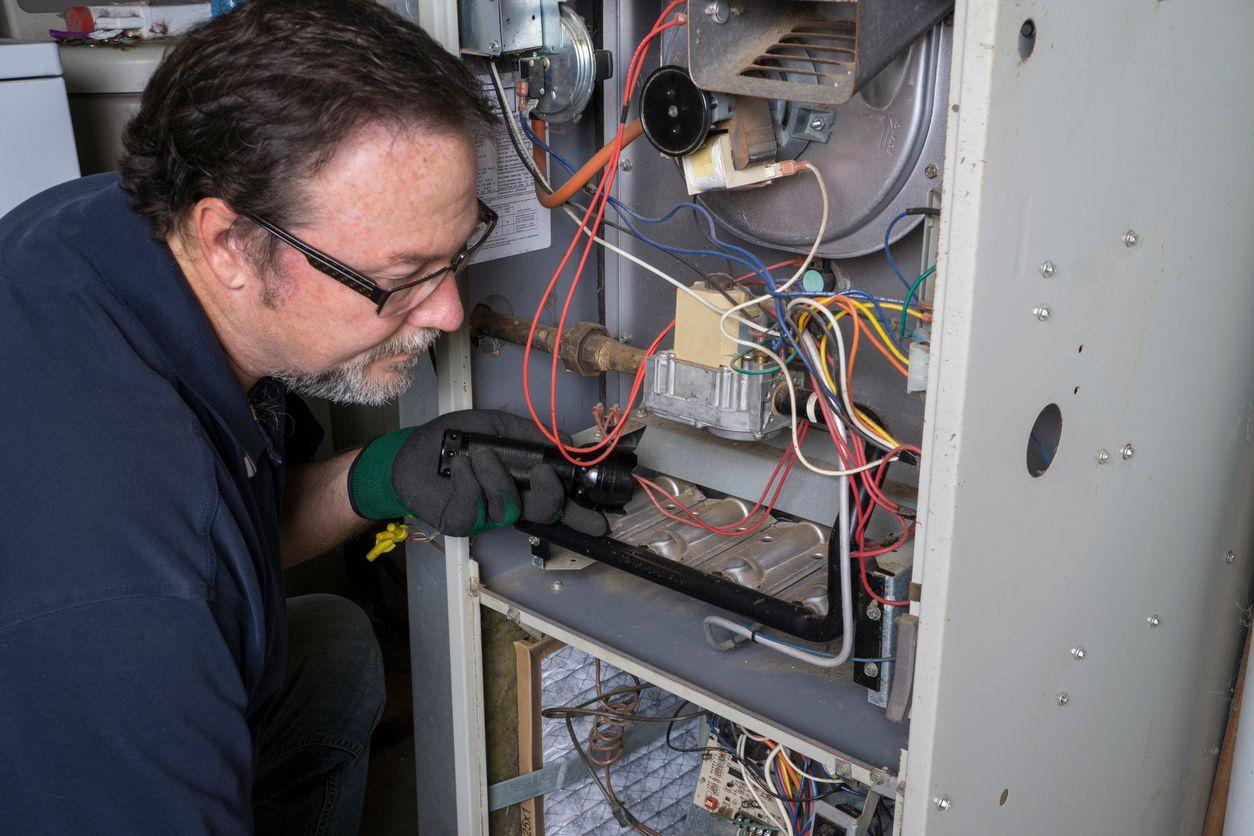How to Light a Pilot on a Furnace

For those with older furnace models, the challenge of dealing with an extinguished pilot light is not uncommon. If you find yourself wondering how to relight the pilot light on an old furnace, don’t worry, as it’s a fairly simple process! HVAC.com explains how to light a pilot light on a furnace to ensure your home stays comfortably warm.
The Purpose of a Pilot Light
Pilot lights are a hallmark of older furnace models, serving as a manual ignition source. Modern furnaces transitioned to electronic ignition systems starting in about 2010, such as hot surface igniters or intermittent pilot lights, which enhance efficiency and eliminate the need for a continuously burning flame.
The pilot light is a small, continuously burning flame that serves as the ignition source for the furnace’s main burner. When the main burner is needed, the thermostat signals the gas valve to open, allowing a larger flow of gas to reach the main burner. The pilot light, being constantly lit, is ready to ignite this increased gas flow, initiating the combustion process and producing the desired heat.
How to Light a Pilot on a Furnace
Relighting a furnace pilot light is a straightforward process, but it’s essential to follow the manufacturer’s instructions specific to your furnace model. Here are general steps to follow:
1. Turn Off the Gas
Safety should always be the top priority when dealing with any heating system. Before attempting to light the pilot on your old furnace, ensure the gas valve is turned off. The gas valve is typically located near the furnace and will have a lever that can be turned to the “off” position. If you smell gas or suspect a leak, evacuate the premises immediately and contact a professional.
2. Locating the Pilot Light
Once you’ve ensured the gas is turned off and safety is prioritized, it’s time to locate the pilot light. The pilot light is usually found near the bottom of the unit. Look for a small access panel marked with instructions or a pilot symbol. Remove the panel to reveal the pilot light assembly.
3. Wait for Gas to Dissipate
Wait for a few minutes to allow any residual gas to dissipate. This is crucial for safety to prevent a buildup of gas when you relight the pilot.
4. Set the Pilot Control Knob
Once the waiting period is over, turn the pilot control knob to the “Pilot” position. Press and hold down the knob to allow gas to flow to the pilot light.
5. Ignite the Pilot Light
While holding the knob down, use the long lighter or matchstick to ignite the pilot light at the end of the tube. Continue holding the knob for about 30 seconds to ensure the pilot light stays lit. After 30 seconds, release the pilot control knob. The pilot light should remain lit. If it doesn’t, repeat the process, ensuring you are holding the knob down long enough for the thermocouple to heat up.
6. Turn the Knob to On
Once the pilot light is burning steadily, turn the pilot control knob to the “On” position. This will allow gas to flow to the main burner, and your furnace should now be operational.
Pilot Light Troubleshooting Tips
If you encounter difficulties with the steps for how to light a furnace, try the following troubleshooting tips:
- Ensure the gas supply is on.
- Verify that the pilot orifice is clean and free from debris.
- Check for any drafts that may be blowing out the pilot light.
What Does It Mean If the Pilot Light Doesn’t Stay Lit?
If the pilot light won’t reignite or continues to go out, several factors may be contributing to the problem. It’s crucial to address pilot light issues promptly to prevent disruptions in the heating or hot water supply and to ensure the safety of the appliance. While some problems can be resolved with simple maintenance, others may require the expertise of a qualified HVAC professional to diagnose and fix the underlying issues.
Potential issues include:
- Gas supply issues: Insufficient gas flow to the pilot light or gas valve problems restricting proper fuel delivery.
- Thermocouple malfunction: A faulty or worn-out thermocouple may not generate enough voltage to keep the gas valve open, causing the pilot light to go out.
- Dirty or clogged pilot orifice: Accumulation of dirt, dust, or debris in the pilot orifice can obstruct the gas flow, preventing successful ignition.
- Airflow and ventilation issues: Inadequate ventilation or air circulation around the appliance can impact the pilot light’s stability.
- Gas pressure problems: Fluctuations or inconsistencies in gas pressure can interfere with the pilot light’s ability to stay lit.